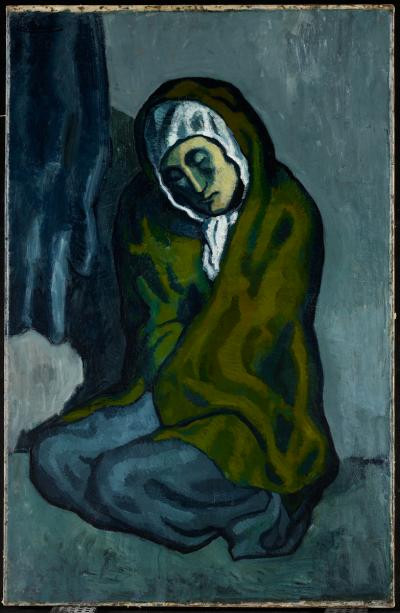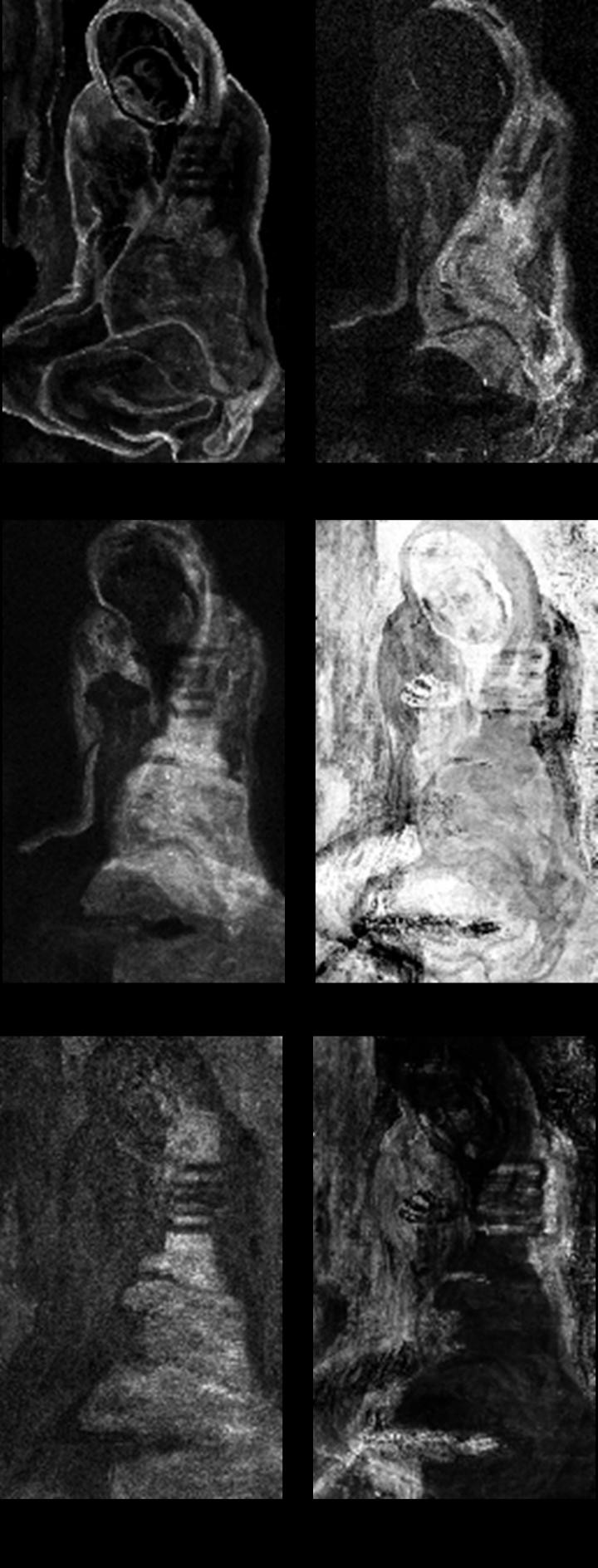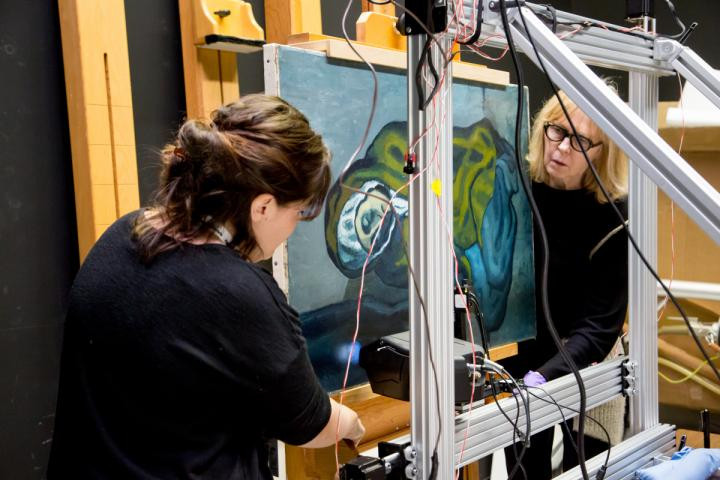New study of Picasso's La Miséreuse accroupie shows he painted over another artist's work
He incorporated parts of a landscape painted by another artist into his work.

Scientists made a curious discovery when they analysed Picasso's famous "La Miséreuse accroupie" (the Crouching Woman) with new technology.
The painting dates back to 1902 and depicts a beggar wearing a yellow-green cloak, sitting against a blue wall. It is owned by the Art Gallery of Ontario (AGO).

A new partnership between the AGO, Northwestern University/Art Institute of Chicago Center for Scientific Studies in the Arts (NU-ACCESS) and the National Gallery of Art (NGA) in Washington revealed that there was more to the painting than initially met the eye.
Using non-invasive X-ray screening, the team of researchers found that another painting by an unknown artist from Barcelona lied under Picasso's work.
Picasso just rotated it 90 degrees to the right and incorporated elements of the landscape into his portrait of the Crouching Woman. For instance, the landscape depicted a cliff's edge that Picasso used to paint the woman's back.
The study also revealed that Picasso changed his mind sometimes during the painting process. He had started painting the woman as holding a disk with her right arm and hand but eventually covered it with the cloak.
The analysis also linked the Crouching Woman to another watercolour painting by Picasso which was sold at a recent auction.
Their findings are made public today (17 February) at the American Association for the Advancement of Science (AAAS) annual meeting in Austin, Texas.
Here's how they did it
The team knew that the famous Spanish artist had painted on another painting. It was revealed by X-ray analysis at the AGO beforehand. Keeping that in mind, they utilised portable imaging techniques at both the NGA Washington and Northwestern.
The first was provided by the NGA's senior imaging scientist, John Delaney – infrared reflectance hyperspectral imaging. It captures "hundreds of images in contiguous narrow spectral bands" and can detect underlying images depending on the transparency of the paint layers. That's how they found the right arm and hand Picasso had covered up.
Then they used an X-ray fluorescence imaging instrument that was developed by Northwestern, which allowed them to uncover buried details connected to other works by Picasso and to learn more about the painting hidden underneath.
"Our international team, consisting of scientists, a curator and a conservator, has begun to tease apart the complexity of 'La Miséreuse accroupie,' uncovering subtle changes made by Picasso as he worked toward his final vision," said Marc Walton, a research professor of materials science and engineering at Northwestern's McCormick School of Engineering and co-director of NU-ACCESS.
The team was able to analyse 70% of the painting in 24 hours and understand Picasso's creative process.
"We now are able to develop a chronology within the painting structure to tell a story about the artist's developing style and possible influences," said the AGO's senior conservator of paintings, Sandra Webster-Cook.























